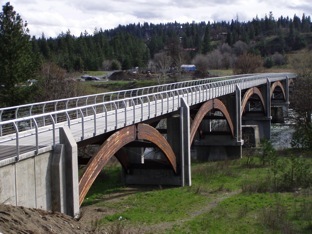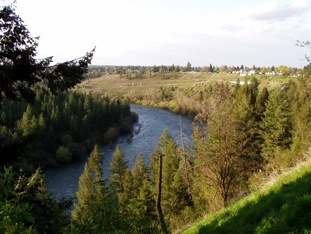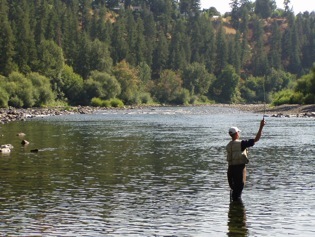Spokane River Natural Areas
Kendall Yards will sit atop a bluff overlooking Spokane River natural areas, including Lower Crossing, Harry Hamblen Natural Area, Riverside Park, and People’s Park. No doubt many Kendall Yards residents will utilize these areas. The Westlink pedestrian bridge is already bringing a lot more people to the crossing, causing bank erosion and de-stabilization as pedestrians take shortcuts down the hill slopes, which are composed of highly erodable till. Kendall Yards residents will exacerbate this problem.
Without careful planning, Kendall Yards will also degrade the habitat values associated with these natural areas, including wildlife corridor values of the relatively untouched Spokane River canyon. We who live in this neighborhood are lucky to often see deer, coyotes and the occasional moose, along with all kinds of birds (raptors, song and game birds) that access the area via the wild river corridor. This a unique urban wilderness and the City must put significant thought into identifying the impacts of this massive development on the river environment, and the appropriate measures necessary to preserve these unique and important natural values.
It is our hope that the developer – who is clearly attracted to the proximity of the Spokane River to his property (and who will benefit from the increased value that it brings) – will acknowledge and address the need to preserve the natural areas that border the project. To do that, however, the SEIS (Supplemental Environmental Impact Statement) must identify and describe both the existing values and potential impacts. Unfortunately, the SEIS contains limited and inadequate discussion of the increased pressure and potential degradation that Kendall Yards can be expected to bring to neighboring natural areas and the Spokane River.
At a minimum, the SEIS should inventory and discuss the wildlife habitat and water quality values that are at stake. Insofar as mitigation measures go, much additional discussion is needed. The City must require Kendall Yards to contribute to adequate paving and paths within the park and natural areas to prevent erosion that harms the hillside and holds potential to send sediments into the Spokane River. Mitigation measures should also include careful outdoor lighting to reduce nighttime light and glare (an element that is completely missing from the SEIS). No doubt there are more ideas on how to reduce adverse impacts and we ask the City to fully explore the potential for preservation of the wildness and beauty of the Spokane River.





